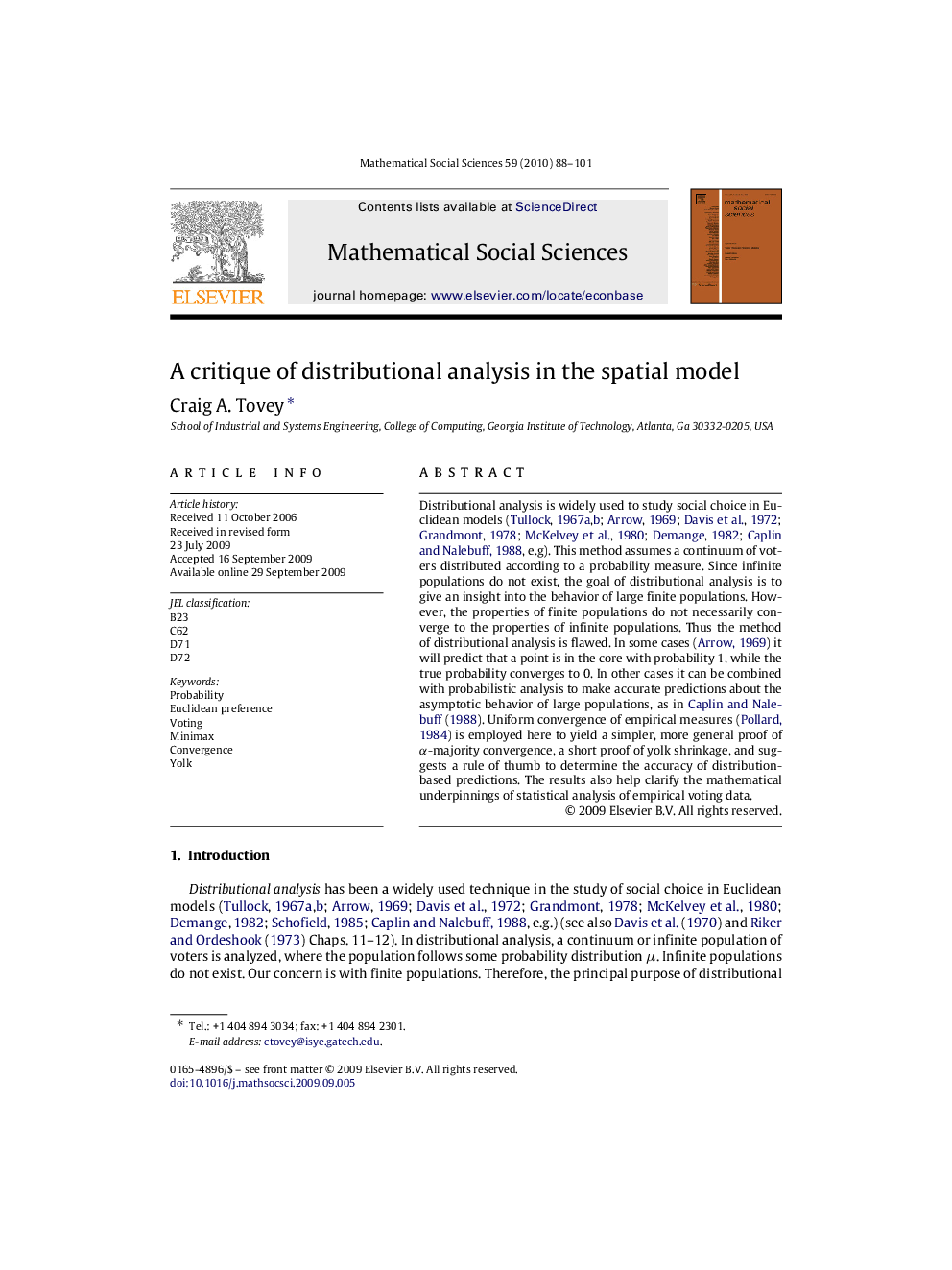| Article ID | Journal | Published Year | Pages | File Type |
|---|---|---|---|---|
| 973007 | Mathematical Social Sciences | 2010 | 14 Pages |
Abstract
Distributional analysis is widely used to study social choice in Euclidean models (Tullock, 1967a,b; Arrow, 1969; Davis et al., 1972; Grandmont, 1978; McKelvey et al., 1980; Demange, 1982; Caplin and Nalebuff, 1988, e.g). This method assumes a continuum of voters distributed according to a probability measure. Since infinite populations do not exist, the goal of distributional analysis is to give an insight into the behavior of large finite populations. However, the properties of finite populations do not necessarily converge to the properties of infinite populations. Thus the method of distributional analysis is flawed. In some cases (Arrow, 1969) it will predict that a point is in the core with probability 1, while the true probability converges to 0. In other cases it can be combined with probabilistic analysis to make accurate predictions about the asymptotic behavior of large populations, as in Caplin and Nalebuff (1988). Uniform convergence of empirical measures (Pollard, 1984) is employed here to yield a simpler, more general proof of α-majority convergence, a short proof of yolk shrinkage, and suggests a rule of thumb to determine the accuracy of distribution-based predictions. The results also help clarify the mathematical underpinnings of statistical analysis of empirical voting data.
Related Topics
Physical Sciences and Engineering
Mathematics
Applied Mathematics
Authors
Craig A. Tovey,
